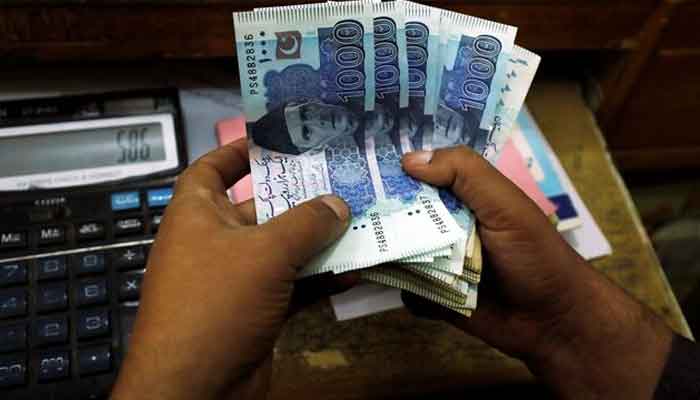
As we await another budget, we are dreading having to pay more in taxes next year and are trying to divine what new areas and activities the government will tax.
Budget figures, as they are in billions of rupees, can sometimes be hard for us to understand. To make them a little more tractable, we can think of the FBR tax revenues this year not as Rs12,000 billion but as Rs50,000 paid by every Pakistani.
This includes infants, kids, the elderly, those below the poverty line, overseas Pakistanis, etc. In short, everyone — and for those who cannot or will not pay, the rest of us will pick up the tab.
We pay taxes whenever we buy a bar of soap, a box of juice, a ballpoint pen, or eat at a restaurant. We pay taxes every time we fly or take a bus. We pay taxes every time we go to work on a motorcycle or withdraw cash from a bank. In short, our governments tax almost every activity of life.
Of the Rs50,000 you paid to the federal government this year, Rs30,000 (60%) was given to the provinces. The federal government retained Rs20,000. Next year, your tax bill will increase to Rs57,500 (including the 50 lakh newborn babies who became Pakistanis this year). We start taxing them early, including on infant formula and diapers.
In addition, the federal government also charged a petroleum levy of Rs4,000 from every Pakistani, which is likely to increase to Rs5,000 per person in the coming year.
Plus, the federal government got non-tax revenues (passport fees, OGDC dividends, SBP profits etc) of Rs10,000 per person. So the federal government had about Rs34,000 per person at its disposal, but it still ran a deficit of Rs27,000 per person or Rs6500 billion (5.55% of GDP). This made each Pakistani indebted by an additional Rs27,000 for a total of Rs300,000.
You would think that if the federal government runs such high deficits, it would cut its own expenditures or give less money to the provinces. You would be wrong. The government neither reduces its own expenditures nor cuts provincial payouts.
The method of choice for the federal government is to borrow the money (both rupees and dollars) to finance the deficits (both fiscal and current account). This is where the IMF comes into the picture. When everyone refuses to lend us more dollars, we go to the IMF to borrow as a lender-of-last resort.
The IMF insists that we cannot borrow without limit, and we should tax the people to meet more than our current needs, and just borrow to repay interest on the debt.
This then brings into focus the government’s choice to either cut unnecessary expenses or raise taxes. However, the government refuses to cut expenditures, especially those that politically or otherwise benefit its MNAs and MPAs.
Its preferred option is to increase taxes. Here too, the government has a choice: expand the net and tax the privileged elite not in the tax net, or tax middle-class Pakistanis already in the net. Our governments typically choose the latter and I think they will do so again.
But as a country, we need not go that route. With a belligerent and defeated India threatening to attack us, we need to increase our defence expenditures, perhaps by Rs600 billion. Similarly, I think we need to work on alleviating poverty and illiteracy, and therefore, an additional Rs500 billion should be earmarked for BISP payments to the poor.
The salaried class, which pays Rs500 billion in taxes, should be given a 40% relief on their taxes. All of this is possible if the federal and provincial governments agree to reduce their ‘development’ expenditures by Rs1300 billion.
This is easy enough to do if public interest is the goal. But is it? Like most years, the FBR will again not meet its revenue target. This means that next year, the Shehbaz Sharif government will again raise your taxes. I hear they have decided to come up with fancy names for new taxes. For instance, the petroleum levy which is now Rs78 per litre will be increased to Rs100 per litre during the year. And an additional levy of Rs5 will henceforth be called a “carbon levy” to make us feel good about the environment.
So, given the levy and carbon levy and customs duty, a motorcyclist will pay Rs120 in government taxes per litre. Given that he typically consumes a litre a day, the owner of a Rs75,000 bike will pay our government Rs3,600 in taxes per month.
But interestingly, our government hasn’t been able to collect this much tax from retail shops worth crores. It’s just that taxing the unorganised, salaried, middle-class, and middle classes is easier than taxing your vote bank or financier.
For instance, on top of 18% sales tax, 4.0% additional sales tax and 2.5% income tax on the sales of juices or ice cream, etc, the government is now thinking of imposing a “health tax” on products containing sugar.
This is supposed to make us feel healthy. Of course, only the politically naive will ask that if sugar is bad for us and needs to be taxed in various products, why not just tax sugar mills directly? Wouldn’t directly taxing be easier? It will ensure that products containing more sugar pay more and those containing less pay less.
The thing is: all Pakistanis are equal, but shop owners, sugar mill owners and large property owners seem to be more equal than the salaried classes and motorcycle owners.
But if Pakistan is to develop and leave poverty and illiteracy behind, it will have to treat all Pakistanis equally.
The writer is former finance minister.
Disclaimer: The viewpoints expressed in this piece are the writer’s own and don’t necessarily reflect Geo.tv’s editorial policy.
Originally published in The News



